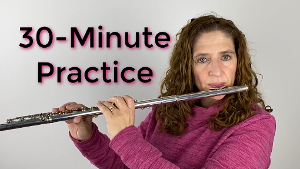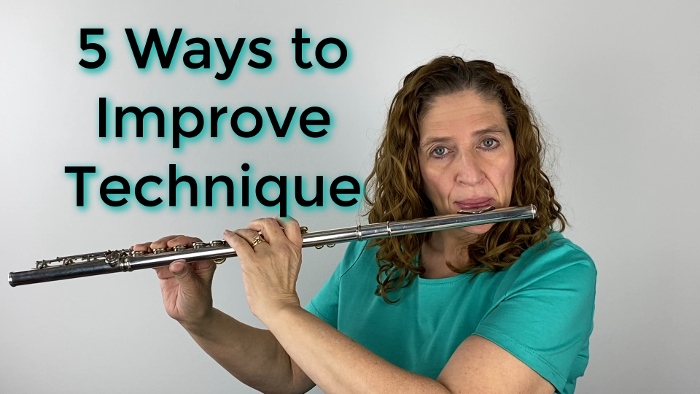Do your fingers move at lightning speed? Would you like them to really move? There are several things that you can do to help train your fingers to move with greater dexterity. Here are five that you can work on that will help you make dramatic improvements.
These are not shortcuts. You already know that it takes a lot of work to achieve big goals. But I can teach you these 5 different ways that will revolutionize your technique in such a way that you will begin to feel improvement in your fingers.
If you want your technique to jump up to the next level, then keep reading!
#1 Interact with Scales
Interact with your scales. Don’t just play scales but play the exercises that move them and go around them. What I’m talking about is exercises such as Taffanel and Gaubert number one, two, and four for just regular scales, five if you’re working on chromatics.
All these exercises are just phenomenal to teach your fingers, how to move. Now, you don’t want to start playing scales fast when you are working on these. Because going slower reveals where the problems are located. The faster you go when you are playing with scales, the more problems you hide. You cannot hear exactly how uneven you are unless you go slower. Going slower is going to make your fingers feel like the muscles are in training.
There are all sorts of scale exercises such as Reichert (7 Daily Exercise) that go through all your scales and minor as well. You can use any technique books that have scale passages in five notes studies in the whole length. If you do them every single day, and you do them with intention when you’re working on your scales, making sure that you are paying close attention to what is happening in those scales, then you will see improvement in your technique.
#2 Work on Arpeggios
Work on arpeggios in all forms, and in all keys. If you’ve never worked on arpeggios, you can start with a C E G arpeggio played up and down two octaves. But instead of landing on a C at the bottom, you land a half step higher, in this case a C#. Then you play up and down the C# arpeggio, landing a half step higher on D. You see how that works. You should play through these until you can play them like the back of your hand.
Now you can vary that however you wish. I sometimes like to go up one octave, and then raise it half a step, and come down the new arpeggio. For example, up C E G C, down C# G# E# C#, up D F# A D, down Eb Bb G Eb, etc.
Now, once you have practiced this and have it in your fingers, then go to your books. There are so many good arpeggio exercises: Marcel Moyse Daily Exercises, William Bennett Sequences. Taffanel and Gaubert’s 17 Grand Exercises (numbers 10 and 11 are my personal favorites). Reichert has got some great ones too. I would recommend that you just work on one of those exercises. Work on one until it is solid. Then you have earned the right to move on to some other books, other arpeggio exercises.
I really like combining Taffanel and Gaubert’s number 10 and 11. These arpeggios go through every key and chord combination major, minor, augmented, and diminished.
Take one measure of number 10 and you play it twice, and then take the measure that has the same notes in 11 and play it once. It takes a long time to get through these, but you don’t have to play them all in one day. Take one section of the two exercises and play it thoroughly. You can work you way through it slowly. It is a strong way to practice.
These are fantastic for improving your technique. They are very important. Consider how much easier the Mozart concertos would be if you knew your scales and arpeggios this well! A lot of classic literature is based on your scales and arpeggios. You can even find scales and arpeggios in major, minor, melodic, augmented and diminished in 20th and 21st century literature. Sometimes it looks a little bit different. But if you analyze it, you can see that it is just a particular scale or arpeggio.
The point is that if you work on your arpeggios this way, it will improve your technique in any music you play.
#3 Work on Glitches
Work on your glitches. A glitch is a combination of fingering where when your fingers are moving from one note to another, your fingers do not all go up or down at the same time. Our fingers and the muscles that move them are not all created equally. Glitches are what can keep a performance from sounding completely clean and clear. It does not sound effortless. It sounds like something is clunking in the middle. That is caused by some finger combination that was not timed right. They did not move at the same time, or one finger came down too fast, or one finger lifted up too slowly.
So, if you have worked on your scales, and you have worked on your arpeggios, then work on your glitches too. Train those muscles. It’s just a training. And you train them as if you were a basketball player or a baseball player. The same repetitive motions are what you need to do.
In order to fix a glitch, you have to find it first. That’s the hard part. You must analyze your fingers to find the glitches. You must identify which finger is the problem.
Start out playing slowly. The slower you go, the more the glitch is revealed. You can then concentrate on fixing those fingers. When you concentrate just on these fingers, you will fix each problem. You are telling your brain to make your fingers move at the same time.
Glitches aren’t beautiful to work on. They’re painful, they’re tedious, and they take a long time. But they are well worth it to improving your technique to work on them.
#4 Listen to Your Fingers
Listen to your fingers! Your greatest tool in improving your technique is listening to your fingers. Listen to what is happening when you are playing your scales, your arpeggios, and your glitches.
You need to be completely in tune to how fast or how slow your fingers are moving. So many of my high school students will come and they think that they can play something well. But when I have them slow it down, we can tell that it is incredibly uneven. When you play fast, it is harder to listen to tell if your fingers are uneven. Your muscles do not all work the same. And what’s amazing that even when you have a metronome on, sometimes you can be uneven between the beats, but be right on the beat. You’ve got to listen to how your fingers move and who is moving too fast, who is moving too slow. Some combinations of fingers just move faster than others. And you must train those fingers to move at the right time. And the only way is to have it revealed to you by listening, listening carefully, it will reveal a world of trouble, but it’s worth listening to because when you fix it, it’s fixed.
Listening will help you improved your technique.
#5 Use a Metronome
Use a metronome. A metronome is a wonderful invention that we need to use for our benefit. And that benefit is to improve your technique. We think that we can start something slow and then want to go a little bit faster then even faster. The problem is our internal metronome. My percussionist probably has a much better internal metronome than I do, and he can maybe do this, but I cannot go from this tempo to a little bit faster without a metronome on to help bring my fingers, my muscles, and my tempo up very slowly.
Most of students cannot move a little bit faster, they jump too many tempo clicks. It is genuinely difficult to figure out how to marginally move your tempo faster. A metronome helps you to move from 65 to 68. I’d be hard pressed to do that without the metronome. Some pieces that I’ve played to needed me to get to 212. I began learning these fast passages at 60. At this slow tempo I could move up 5 to 8 clicks every time I was confident. However, when I had learned these tricky fast sections up to about 180 my metronome moved up much more incrementally. I remember going from 180 to 183 to 185 and so on. It was so fast that I needed these small adjustments to achieve that tempo.
So, use your metronome. It is a great way to help you improve your technique. It will reveal where you are uneven, and uneven within the beat. Sometimes we are right on the beat with our first notes, but the inner beats are uneven. It is amazing that you can be with the metronome and yet be uneven! When that happens, you need the metronome to be on the subdivision of the beat.
These are five ways that you can improve your technique. Start working on them today. You’ll notice an improvement tomorrow. Interact with scales, work on arpeggios and glitches, listen and use a metronome. This will help you to really get your fingers moving.
Have fun!
DoctorFlute
Watch me demonstrate this:
5 Ways to Improve Your Technique Today – FluteTips 141

How to Practice Triplet Scales
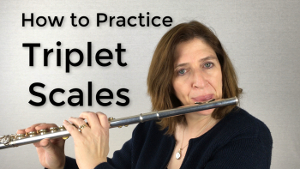
Marcel Moyse Scales and Arpeggios – FluteTips 95
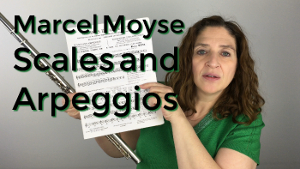
Fixing the Glitch Exercise with Taffanel & Gaubert 10 & 11 Practice with Me
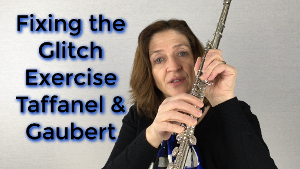
The Reasons Why You Can’t Play Fast Passages Cleanly FluteTips 106

What to Do in a 30-Minute Practice Session – FluteTips 119
